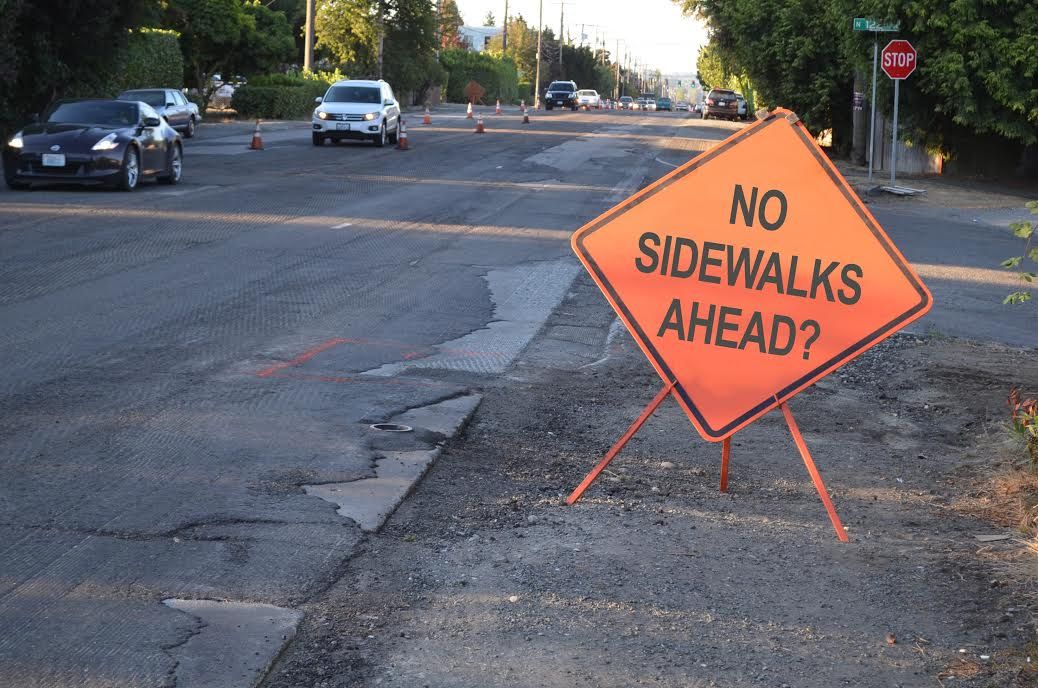Many people laugh when I say that Houston is the largest small town I’ve seen, but think about it. We have the population, the arts, the restaurants and yet, how do they interconnect? Look out your window. Is there anything missing? If you see a wide (five-foot minimum), well-maintained, accessible, and unobstructed sidewalk — congratulations! You are an exception and may be part of positive development of the city.
I keep hearing people wonder how to attract large corporations, innovators, and young entrepreneurial talent to Houston to push it to the next level. We have to realize that every property without a sidewalk is a clear statement saying, “you, pedestrian, neighbor, are not welcome here.”


All of us have a role to play in the development and success of this city and are responsible for maintaining the small section of Houston located along our property lines.
Think about the benefits associated with a well-maintained sidewalk:
– They significantly reduce chances of a neighbor getting run-over at your front door (this should be a good enough incentive on its own, but I’m just getting started…).
– They provide greater opportunities for neighbors to meet and interact with each other. Nobody stops and chats in the middle of the street — this magic opportunity only happens when people have a safe place to pay attention to each other and forget about the traffic passing by.
– They provide increased safety. Pedestrians walking along a safe path pay much more attention to the details in the activity of the community when they don’t have to worry about oncoming traffic. Well-organized Neighborhood Watch groups (like this one in Idylwood on the east side of town) are very effective at alerting the community about unusual activities.
– They create increased property value. Sidewalks improve curb appeal, increase a neighborhood’s desirability, and with it, its property value many times over.
– They establish the grounds for a healthier community. A small amount of daily exercise can improve overall health and sidewalks provide the easiest, quickest, and cheapest option for neighborhood walks.
– They promote increased sales for commercial properties. Chances are higher for a pedestrian to get “tempted” by an appealing storefront along a sidewalk than a driver getting the urge to make an impulsive purchase just by noticing your logo across a massive parking lot.
– They also promote a reduced dependency for vehicles. It doesn’t matter how many means of public transportation a city implements. None will be used regularly if people have to risk their lives to reach them.


I understand that Houstonians are very attached to their lack of regulations, but the city should consider the valuable opportunities lost due to lack of planning. Houston’s Planning Commission has been working on additional regulations for new development.
But what about existing properties? Do we wait 100 years until every property has undergone a major renovation? A more aggressive approach is needed to see any kind of meaningful improvement. Perhaps implement a plan to have sidewalks along every property within the city limits? With a strict deadline, incentives, and/or penalties? Although there is a cost associated with these improvements, some of the worst offenders I’ve seen are multiple sections of central, high-end neighborhoods such as Southgate, Old Braeswood, and River Oaks (the latter of which was originally touted as a pedestrian-friendly neighborhood that now has multiple blocks of a once-service road turned major artery like San Felipe Road running through it, completely deprived of pedestrian access). The examples are plentiful and extend as far as the city boundaries. I haven’t even mentioned ditches, old and cracked three-foot wide strips of concrete, or utility poles — the list of obstacles is long.

Our community is strong and has many opportunities for growth that go beyond reaping the benefits of an oil-based economy.
Houston, it’s time for all of us to get serious and do our part. Build an appropriately-sized sidewalk along your property and maintain it. Join a community organization. Make your voice heard. Together, we can make Houston a healthier, more resilient city.


Here are some great resources for finding out more about building healthier environments:
